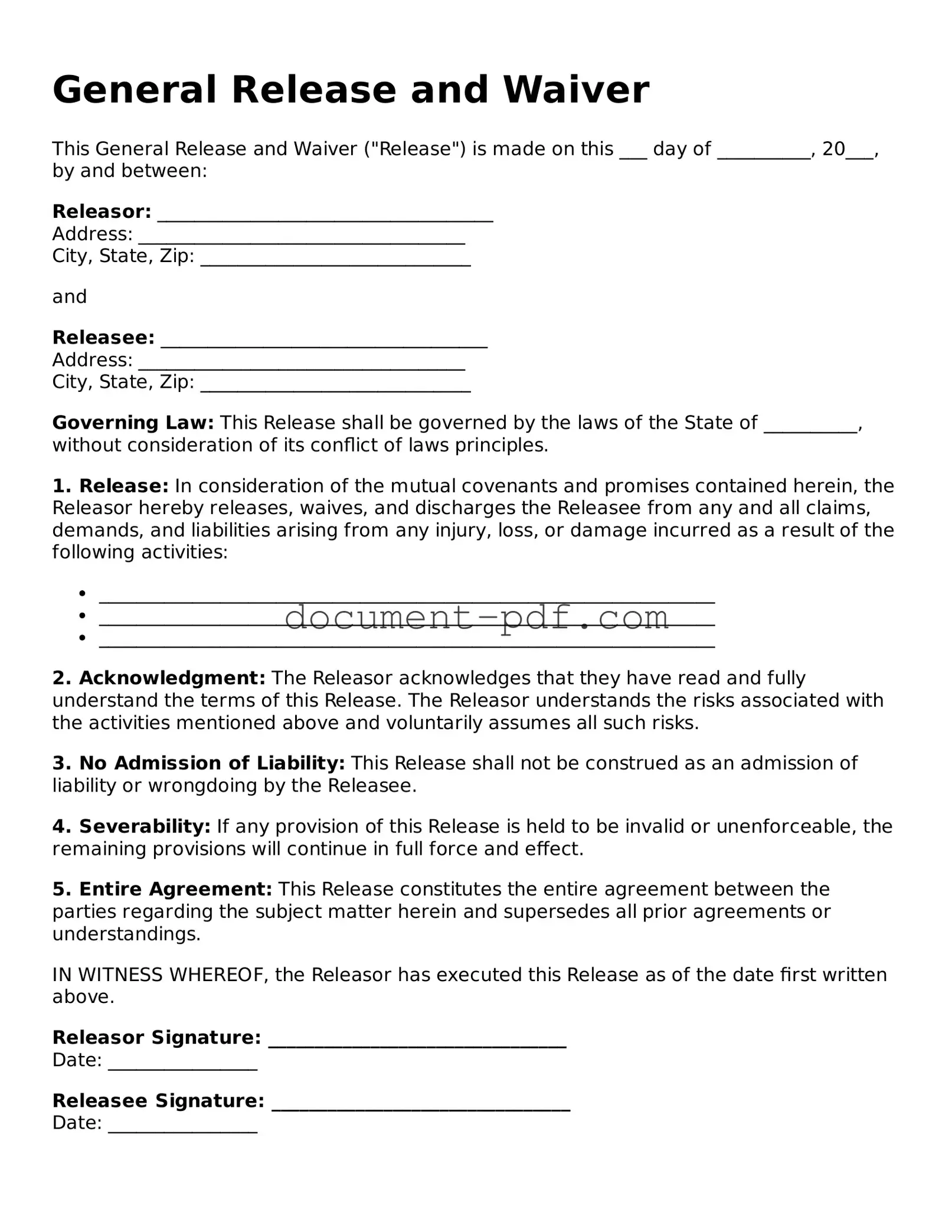General Release and Waiver
This General Release and Waiver ("Release") is made on this ___ day of __________, 20___, by and between:
Releasor: ____________________________________
Address: ___________________________________
City, State, Zip: _____________________________
and
Releasee: ___________________________________
Address: ___________________________________
City, State, Zip: _____________________________
Governing Law: This Release shall be governed by the laws of the State of __________, without consideration of its conflict of laws principles.
1. Release: In consideration of the mutual covenants and promises contained herein, the Releasor hereby releases, waives, and discharges the Releasee from any and all claims, demands, and liabilities arising from any injury, loss, or damage incurred as a result of the following activities:
- __________________________________________________________________
- __________________________________________________________________
- __________________________________________________________________
2. Acknowledgment: The Releasor acknowledges that they have read and fully understand the terms of this Release. The Releasor understands the risks associated with the activities mentioned above and voluntarily assumes all such risks.
3. No Admission of Liability: This Release shall not be construed as an admission of liability or wrongdoing by the Releasee.
4. Severability: If any provision of this Release is held to be invalid or unenforceable, the remaining provisions will continue in full force and effect.
5. Entire Agreement: This Release constitutes the entire agreement between the parties regarding the subject matter herein and supersedes all prior agreements or understandings.
IN WITNESS WHEREOF, the Releasor has executed this Release as of the date first written above.
Releasor Signature: ________________________________
Date: ________________
Releasee Signature: ________________________________
Date: ________________
